A system to query a database of 280,000 Lottery grants
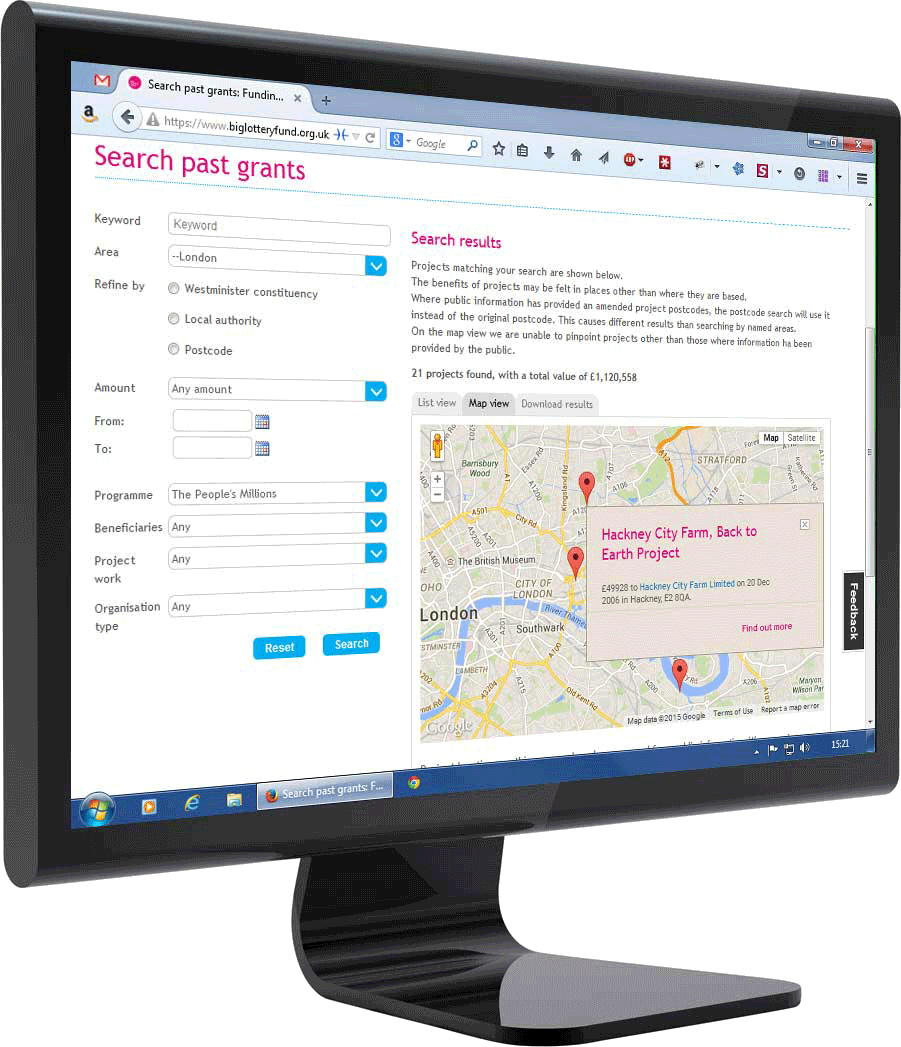
Provide internal and external stakeholders with a self-service means to search for grants by location and other criteria.
Big Lottery Fund (BIG)
2012-2015 alongside other projects
The now live Past Grants Search (PGS) is a massive leap forward. It has much more powerful functionality than its predecessor. People can now easily learn which good causes over £14 billion has been given to.
It is plays a key part in the journey of users adding their funded project to BIG's online community.
The PGS meets the organisation’s legal requirements and commitment to open data. Plus it also lays the foundations for richer applications in future. .
 Pens & paper
Pens & paper
 Axure
Axure  Basecamp
Basecamp  Redmine
Redmine Sitecore
Sitecore Zimbra/ Telligent
Zimbra/ Telligent 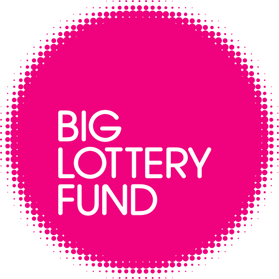
I reviewed all the feature requests and support calls we had received about the existing PGS. I also talked to customers and staff about it. It was clearly seen as limited and difficult to use:
I also looked around at comparable systems, for example Yell, Rightmove and other Lottery Distributors to see how they tackled similar challenges.

I talked extensively with the FMS database administrators, lawyers and other stakeholders to learn what data about grants was available and how it could be used. The findings were:
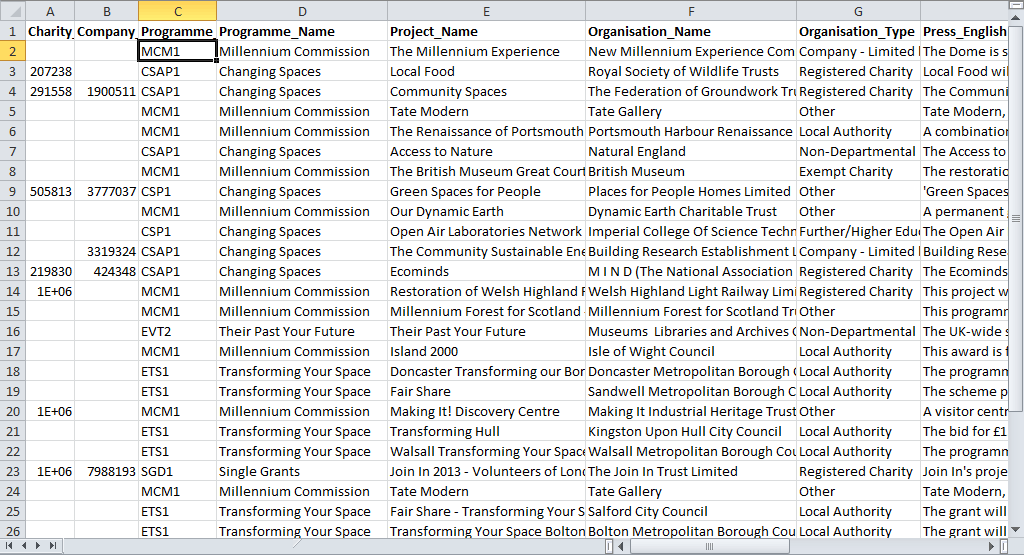
Alongside this project was another to establish an online community for BIG’s customers. We wanted grant-holders to create Facebook style groups to showcase what they had achieved.
The challenge was how to facilitate this by individuals at the projects (who were legitimate representatives but unknown to BIG) yet prevent other people from creating groups about other subjects.
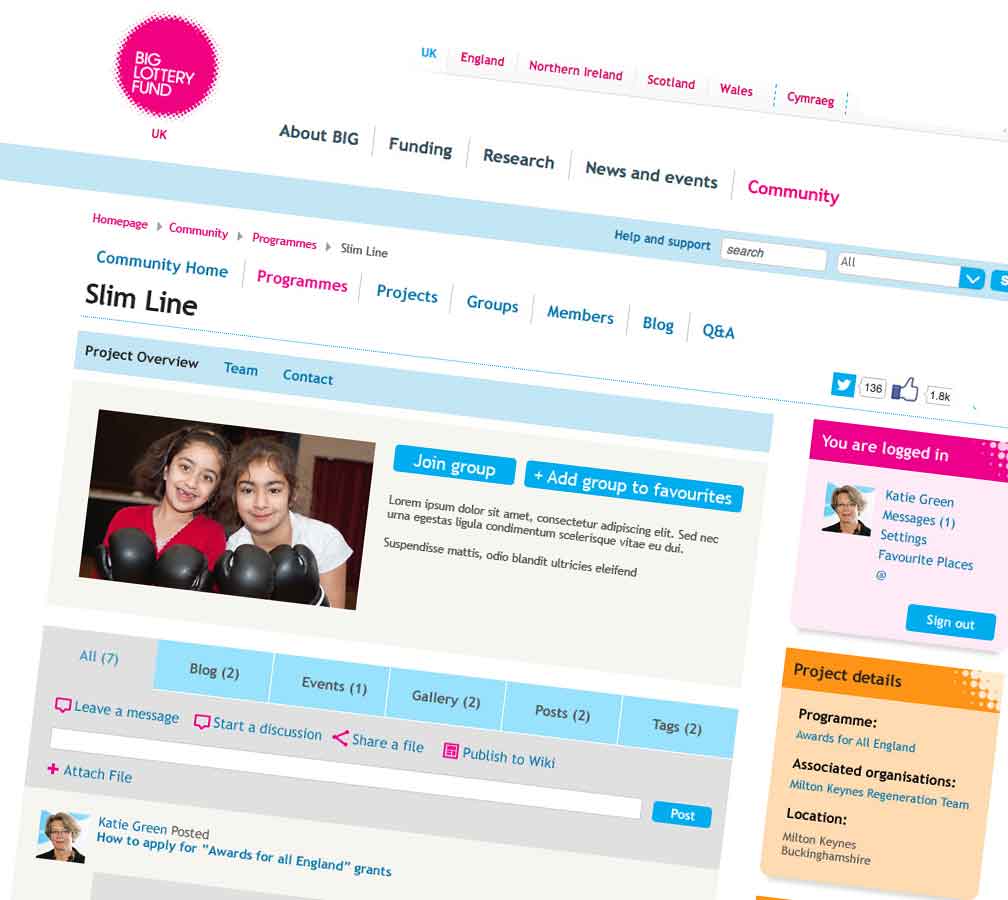
From the research I set the following goals for the project
Generally, I wanted as much raw data as possible to give me flexibility later. I knew that priorities meant that the business would not give me a second opportunity to get these extracts right.
We considered authentication to control group creation, but this was problematic. Inspired by LinkedIn company pages I allowed any logged in user to create a project group in the Community by ‘claiming’ a grant on the PGS. I persuaded colleagues that this trusting approach would give a smooth experience for users aiding Community growth. Any problems could be moderated reactively.
I produced this flow charts to define the logic for the claim process and another for where in the community the project and if necessary new programme group should be created.
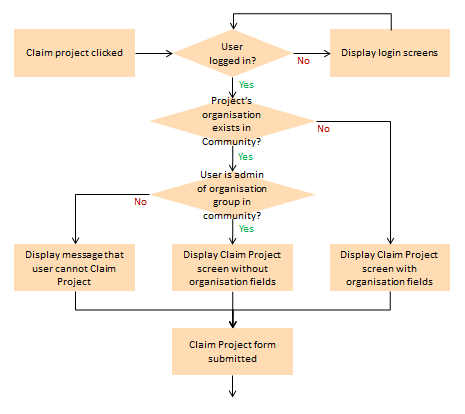
We could not pinpoint the locations in our data. Work to verify them was not feasible. We decided the district would at least be indicative of the area benefiting from the grant.
Heatmaps of the areas would have had limited usefulness and not meet the users’ needs.
My solution was based on Post box Finder:
I devised a series of unobtrusive safeguards to protect this crowdsourcing method from mistakes, spammers and malice.
Through explanations, I successfully overcame the expected initial caution to this approach.
I wrote an article for the Big blog explaining the idea and asking for input from the public. The responses were all positive.
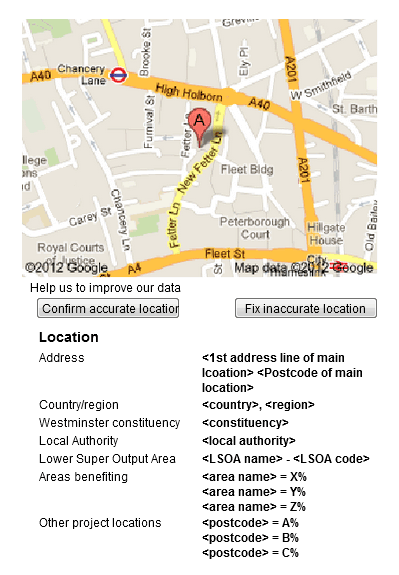 Above: Project location information
Above: Project location information
Below: Edit project location dialog 
I used Axure to create clickable wireframes of my ideas. Annotations explained the features. I initially set out 5 screens
I sent the prototype to several interested internal parties. I observed some trying it out. I received lots of excellent feedback which I used to iterate the prototype.
I also explained why some of their ideas were not possible or could be done in future – for example Scottish Parliament constituencies.
Our digital agency created a HTML prototype using real data and the new website design. Again we tested this for usability and compliance with business needs.
This really crystallised some issues compared to the wireframe:
While some of these late changes were disappointing and challenging they did help to simplify the interface.
We wrote functional and technical specifications. This was a three way task between me (Digital Media), the in-house database administrator and the front end development agency. Being spread between London, Birmingham and Manchester was a challenging.
I diligently reviewed these and identified many previously hidden issues. I had to consider the impact on usability of any technical decision and vice versa.
There were several iterations of these specifications as we dealt with the complexities and limitations.
During development I helped clarify the specifications and decide on undefined points.
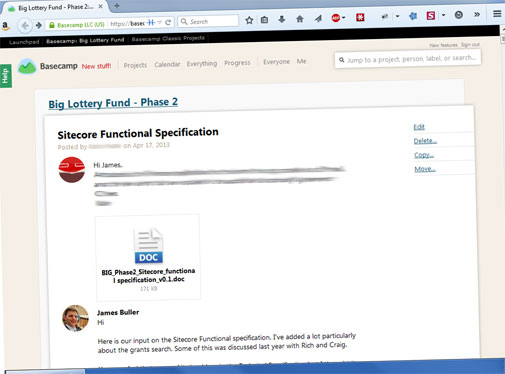
During the development phase there were two rounds of testing, involving staff and customers.
We reported issues on Redmine, including:
Otherwise the interface performed well, people said they liked it and that it was a massive improvement on the existing system.
At the last minute we discovered a bug with the claim project process. This has feature has therefore been disabled except for adminstrators until it can be fixed.
The finished Past Grants Search and Community had a soft launch on 28 January 2015. To get it started we added the locations of 400 projects.
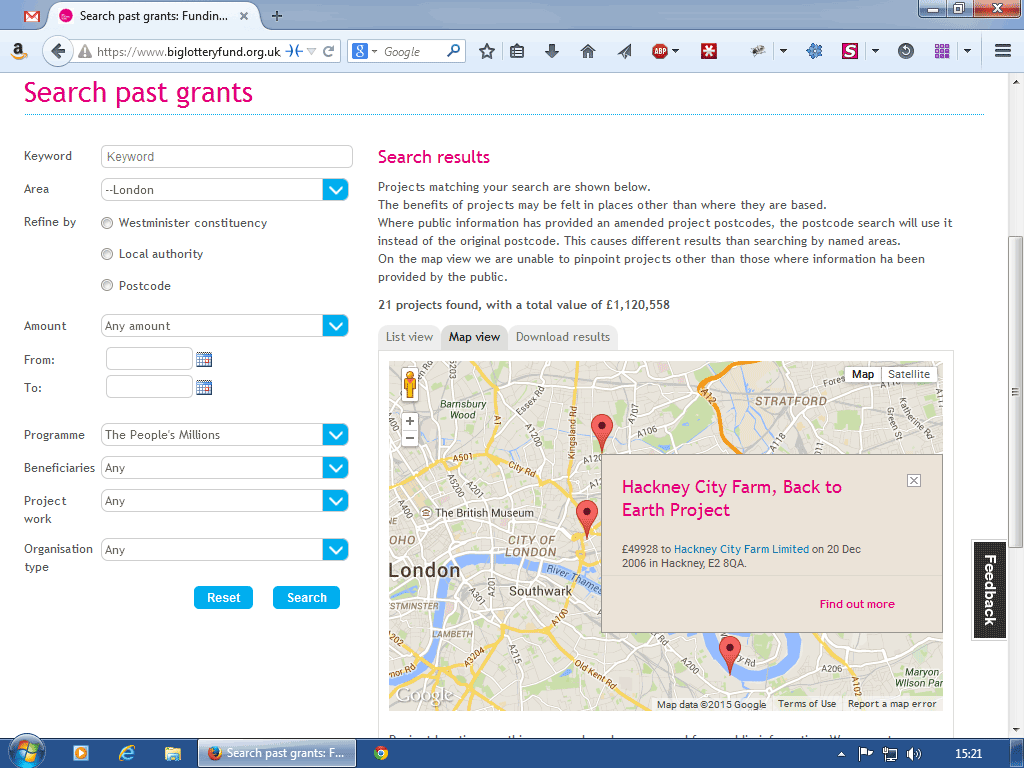
Delivering a quality grants search was a personal mission of mine, It was a very challenging journey but one I am very pleased to have made. I learned a lot of skills and lessons on the way. It cemented my desire to work more in user experience. I am proud of the product and thank everyone who was involved.
I would have liked to have done more user testing earlier and hence iterations in response. There are certainly improvements and additions that could be made.
But getting the data online and the business logic right was the main hurdle here. Now the real user experience work can begin to determine how it develops.
I believe that we are now closer to the day when I can have that app on my phone, to tell me that a Lottery funded project is around the corner!